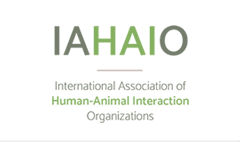Abstract
Background—Several studies have identified that pets can promote mental health, wellness, and recovery. However, little is known about the impact of pet ownership upon those with a severe mental illness (SMI), or whether mental health services are offering sufficient support that is specific to the needs of pet-owning service users. Aims—To identify the proportion of pet owners among an urban, U.K.-based community psychosis service; and to elicit service users’ views on pet ownership, to better understand and support this population’s particular needs. Method—The proportion of pet owners among this sample (n = 212) was compared with U.K. population data using a z-test. Semistructured interviews were conducted with a volunteer subsample of service users (N = 11), and interpretive phenomenological analysis (IPA) was used to explore their idiographic experiences of pet ownership. Results—The proportion of people with SMI who own pets was significantly lower than the national average. IPA revealed that pet ownership in the context of SMI had both positive and negative influences upon mental health, notions of self and well-being, and social capital. Conclusions—Pet ownership in the context of SMI is complex, and the associated benefits and challenges are best understood at a case-by-case level. Service providers should note that pet ownership can form an important part of service users’ identities and should be actively considered when managing their care. For instance, pets can offer an engaging topic of conversation through which to develop positive, person-centered relationships with service users and can offer an accessible route into more difficult conversations surrounding care and crisis planning.
Recommended Citation
Alfrey, Abigail; Church, Steve; Christodoulou, Niki; and Harding, Emma
(2022)
"“Why should the fish feel safe? I don’t feel safe!”: An Audit of Pet Ownership within an NHS Service for Adults with Severe Mental Illness, with Lessons for Service Improvement,"
People and Animals: The International Journal of Research and Practice: Vol. 5
:
Iss.
1,
Article 2.
Available at:
https://docs.lib.purdue.edu/paij/vol5/iss1/2


